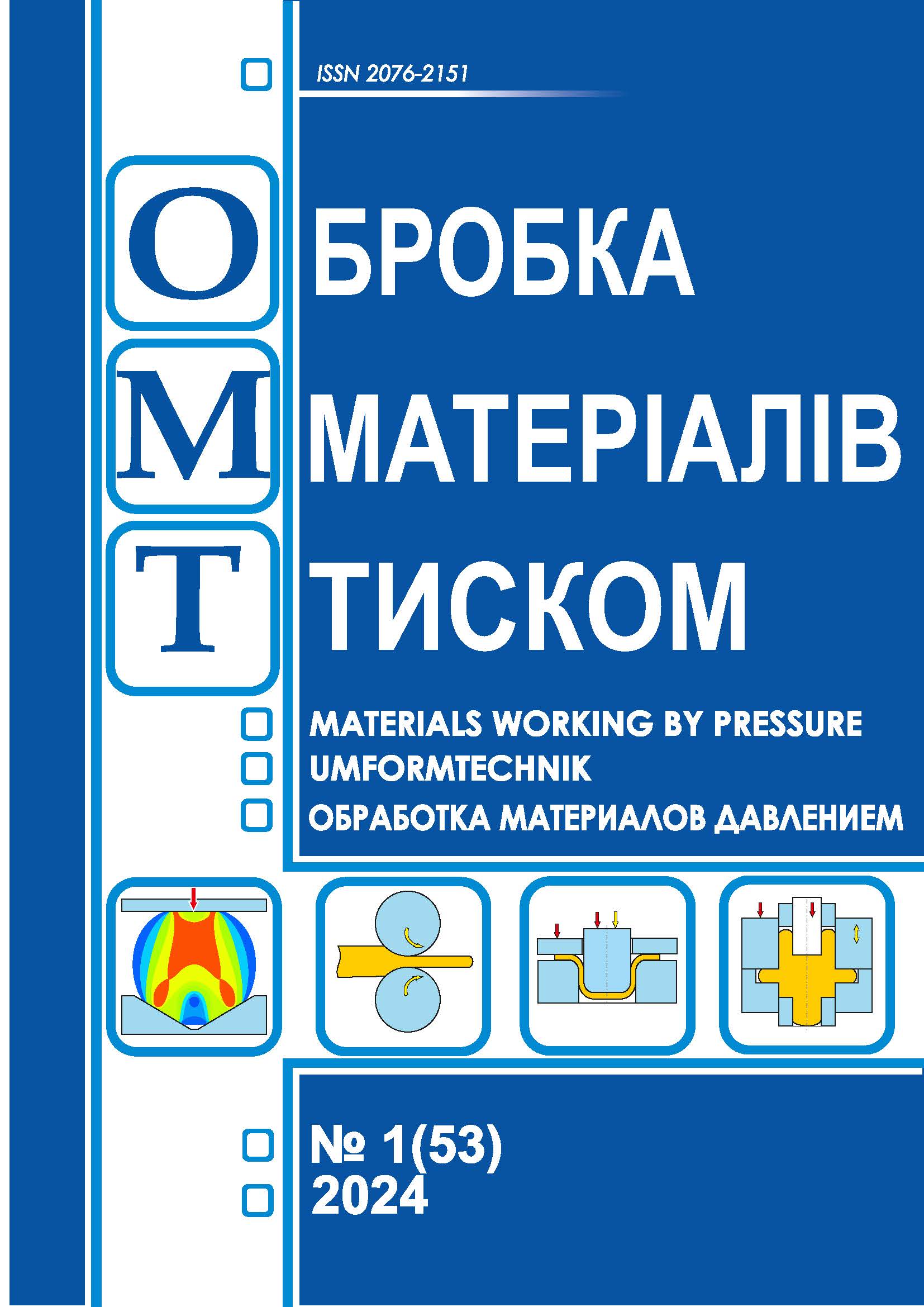Simulation of free deformation of a tubular blank under the condition of electro hydraulic loading
DOI:
https://doi.org/10.37142/2076-2151/2024-1(53)43Keywords:
electrohydraulic discharge, pipe billet, free distribution, thinning, features of deformation, mathematical modelAbstract
Naryzhnyi O., Taranenko M.
Simulation of free deformation of a tubular blank under the condition of electro hydraulic loading
The article is devoted to the study of the process of forming the pipe billet in conditions of electrohydraulic discharge. Such processes are widely used in the manufacture of the ends of pipeline systems in the aircraft, engine and automotive industries, in the manufacture of reconfigured transport systems for moving bulk materials (grain, flour, etc.), for sealing heat exchanger joints, etc. These processes are characterized by a high degree of plastic deformation of the workpiece during one technological transition, as well as complex kinetics of formation with the participation of liquid and vapor plasma parts of the technological system. There is a significant need for the development of research methods for such systems and processes using, in particular, mathematical modeling. Existing mathematical models of forming processes do not take into account the phenomenon of thinning of the thin-layer workpiece, which is the third main deformation.
The purpose of the work is to improve and clarify the mechanical-mathematical model of the free distribution of the pipe billet under electrohydraulic loading by using the finite-element approximation of the theory of shells taking into account thinning, as well as to study the regularities and features of the mechanical processes of the movement of the elements of the technological system and the stress-strain state of the billet with taking into account this improvement.
The structural diagram of the model of the technological system, dimensions, properties of the material, conditions of violation of the technical process, conditions of mechanical interaction of system elements, method of improving the model are given. The results of modeling mechanical processes in the technological system and the stress-strain state of the workpiece using an improved mathematical model are presented.
Improvement of the model is appropriate and corresponds to the results of experiments. In general, the model is adequate, the method has sufficient accuracy, the thinning has a heterogeneous character and varies in the range of 1.2...14%, the obtained process efficiency corresponds to the experimental data. To increase the efficiency of the technological process, it is desirable to dispose of the final reserve of internal energy of the steam-gas cavity, for example, by reloading.
In the future, the improved model can be used to study indentation in the matrix, sealing of joints and analysis of reloading with a new discharge.

